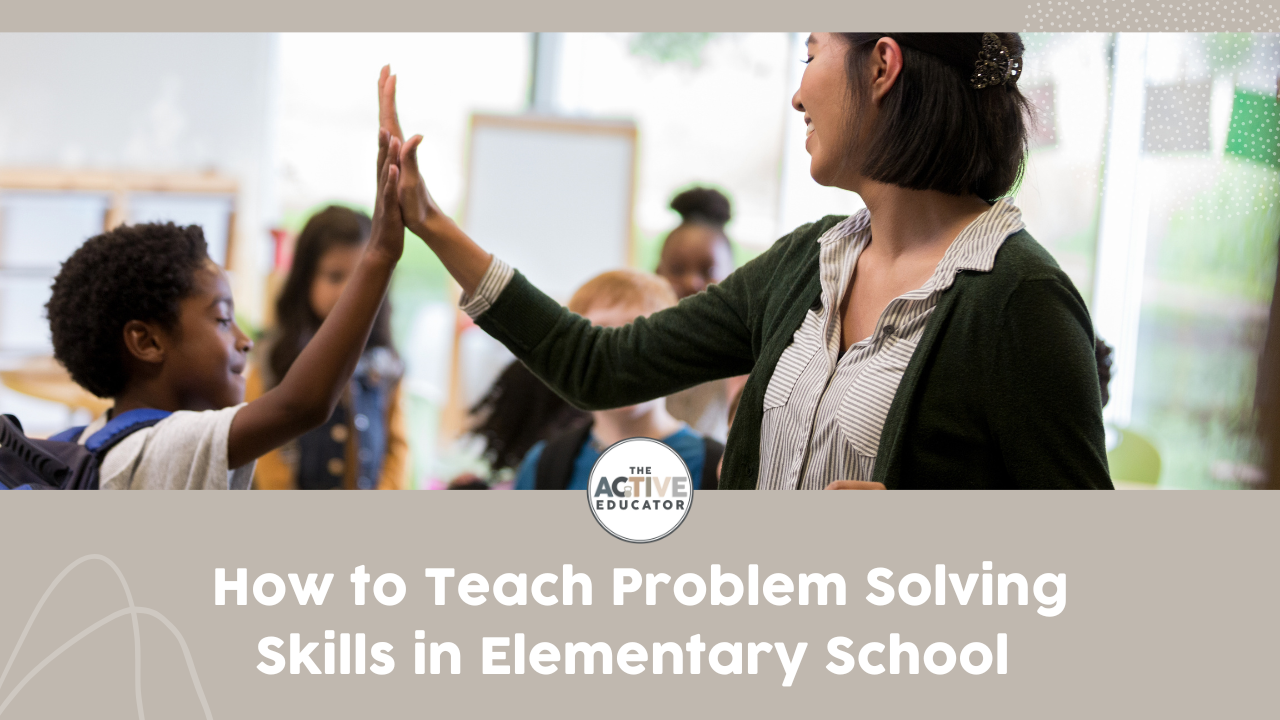How to Teach Problem Solving Skills in Elementary School

Problem solving isn’t only about math equations. There are several social problems that students experience during a school day. These are problems that involve interactions with the school community. Beginning in elementary school, teachers must teach problem solving skills to help students feel confident to handle social interactions independently.
Why is it Important to Teach Problem Solving Skills
The benefits of teaching problem solving skills are that it helps children learn how to work as a team, helps them learn how to communicate with others, and helps them be more successful in school.
Teaching students to solve social problems without the teacher's support allows more time to work on academic skills. There are fewer distractions and disruptions to the learning process. These skills will also transfer to other situations outside of school, helping the student to build relationships with family and friends in their communities.
Five Problem Solving Skills to Teach Students for Social Situations
Problem solving skills should be taught from the beginning of the school year. The sooner that a teacher can provide students with strategies that they can use to solve problems in the classroom, the better for everyone. Here are some of the strategies that I suggest teaching students right away.
- Stop and Think
Stop and think is one of the problem solving strategies that can be used in a variety of situations. It works very well when students are struggling with a problem independently. For example, when they can’t find the necessary resources or supplies to complete a task, I ask them to stop and think about the last time they used the thing they are looking for. This helps to reduce frustration and prevent outbursts. - Calm Down
Calming down is a skill that students will need to practice throughout the year. Being able to calm down at the height of emotion is not easy. So, students can use strategies like counting down/up, asking for a break time, or changing their location to help them. When students learn what works best for them to calm down, they become more confident in responding to problems and usually help others when they need a reminder to calm down. - Active Listening
Teaching students active listening helps them work to reduce conflict with peers. Active listening includes giving someone full attention (not requiring eye contact if a student struggles with doing so), using movement to show that they hear the other person, and responding after the other person has shared their thoughts. Students that listen to understand can respond calmly during a problem situation.
- Make the Best Choice
This problem solving skill works well when students are working on completing a task. Instead of students becoming frustrated or worried about getting something wrong, the teacher encourages them to make the best choice. This builds confidence in students' abilities while also feeling comfortable taking risks. When students understand that school is about doing their best and learning, they are more likely to try new things instead of worrying about perfection. - Identify the Problem
When students approach teachers with a problem, they should ask if it is a feeling problem or an action that is causing the problem. Being able to name the problem helps students to determine the best solution. That is why teaching students to identify if the problem is because of a feeling or an action is an important strategy to teach at the start the school year. Teachers can coach students to stop and identify problems through questioning and modeling. Eventually, students can ask themselves the same questions before approaching the teacher.
Resources for Teaching Problem Solving Skills
It is important to teach and reinforce problem solving skills throughout the year. Students will need reminding and encouragement to remember that they are equipped to handle some problems independently.
If you want to bring a sense of routine and calm to your classroom, the Heart Centered Teacher Membership is a great place to start. It is a collaborative community with like-minded teachers who understand the importance of SEL.

When you join the Heart-Centered Teachers Community, you will gain support, accountability, and monthly-themed activities for teachers who want a cohesive pathway of SEL skills that will last students a lifetime.
Join the Heart-Centered Teachers Community!
Bring a sense of routine and peace to your classroom.



